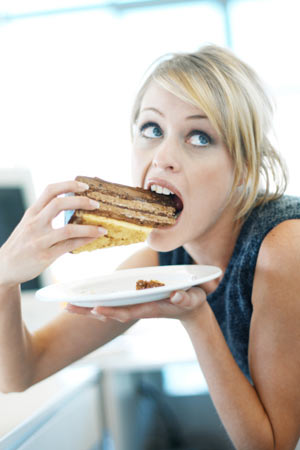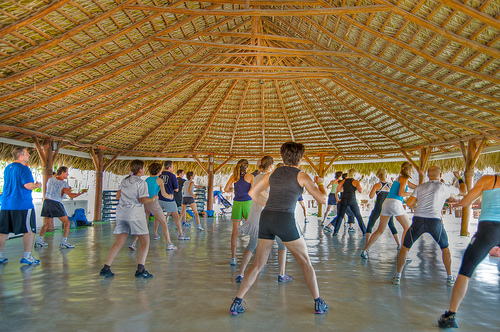Roadblocks To Weight Loss – Avoid Obstacles To Lose Weight
There are many possible reasons you aren’t losing weight, even though your diet is stellar. Here’s a brief overview of some additional possibilities for you to consider.
Dieting is complicated: There are even ways to screw up without realizing it. For instance, who would ever think that working out in the a.m. or cranking the AC might be the reason you’re not slimming down? Luckily, once you’ve identified these flubs, fixing them is nowhere near as hard as squeezing into a body suit.
Roadblock #1: Always A Go-Getter, You Workout At 6 A.M.
What’s wrong with that? Morning workouts are great-if you go to bed at 10 p.m. In a recent study in the American Journal of Epidemiology, women who slept seven or more hours a night were less likely to put on weight than women who didn’t. Those who slept only 6 hours a night were 12 percent more likely to gain substantial weight-33 pounds on average over the course of 16 years! Other studies have linked lack of sleep to a higher BMI and have found that it negatively affects levels of the appetite-regulating hormones ghrelin and leptin.
Detour: Don’t sacrifice your snooze time-not even for an extra-long run. Quality matters more than quantity, so taking a siesta later won’t help. “In a 20-minute power nap you don’t get into the deep-sleep stage. You need to go through the cycles of sleep over a few hours to get the restorative rest that allows your body to work properly. Bottom line: You’re better off sleeping through your workout every other day than stumbling to a sunrise Yoga class on too few z’s.
Roadblock #2: You’re A Teetotaler
Alcohol may not be the diet kryptonite you thought it was. Recent research showed that those who have a single drink a couple of times a week have a lower risk of becoming obese than either teetotalers or heavy drinkers. Those who consume more than four drinks daily, on the other hand, boost their odds of obesity by 46 percent.
Detour: Go ahead and have a drink; just avoid belly busters like a 245-calorie piña colada. Instead, raise a glass of heart-smart merlot (123 calories per 5 ounces), Bud Light (110 calories per 12 ounces), champagne (88 calories per 4 ounces), or sake (39 calories per ounce). Or mix a 100-calorie cocktail, like vodka and diet tonic or tequila and club soda. Just make sure you drink it with some healthy food, such as raw veggies with low-fat dip or whole-wheat pita and hummus.
Roadblock #3: You Crank The AC
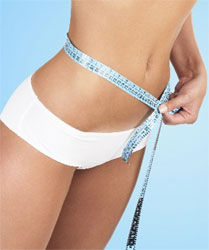 Al Gore wants you to lay off the thermostat to save the planet. Here’s how it can save (the shape of) your own butt, too: In a study published in Physiology & Behavior, researchers found that exposure to temperatures above the “thermo neutral zone”-the artificial climate we create with clothes, heating, or air conditioning-decreases our appetite and food intake. At a slightly uncomfortable 81 degrees, the women in the study experienced a 20 percent decrease in appetite and ate 10 percent less than at 72 degrees.
Al Gore wants you to lay off the thermostat to save the planet. Here’s how it can save (the shape of) your own butt, too: In a study published in Physiology & Behavior, researchers found that exposure to temperatures above the “thermo neutral zone”-the artificial climate we create with clothes, heating, or air conditioning-decreases our appetite and food intake. At a slightly uncomfortable 81 degrees, the women in the study experienced a 20 percent decrease in appetite and ate 10 percent less than at 72 degrees.
Detour: Instead of cranking the air conditioner every time you feel a little warm, learn to endure slightly steamier conditions. Hitting the “off” button is well worth a little discomfort if it helps you lose the saddlebags.
Roadblock #4: You Log Extra Miles On The Treadmill To Make Up For Giant Meals
When it comes to dieting, success isn’t 90 percent perspiration. You can’t achieve lasting weight loss via exercise alone. But a new study in the Journal of Clinical Endocrinology and Metabolism found that dieting can shrink your fat zones just as effectively as dieting plus exercise.
Detour: If you try the diet-only approach, you need a clear idea of how much you should be eating. Multiply your weight by 10, then add your weight again to that sum: That gives you the number of calories you need to maintain your current weight without activity. For example, 135 pounds x 10 = 1,350 + 135 = 1,485 calories. Eat more than that regularly, and your “loose-fit” pants won’t anymore; eat less, and your muffin top will start melting away.
Roadblock #5: You Ignore Sarcopenia
Sarcopenia is age-related muscle loss-and it can start in your 30s. If you don’t take action now, you could begin to lose as much as 1 to 2 percent of your muscle mass by the time you hit 50. Less muscle means you burn fewer calories and store more of them as fat.
Detour: The key to stopping muscle meltdown is to strengthen your back, shoulders, arms, and thighs. “When you increase lean muscle mass, you burn more calories, even when you’re sitting down doing nothing. Find a strength workout and start sculpting at least twice a week. And keep it up after you reach your goal weight: Studies show that if you don’t exercise regularly (60 minutes of moderate physical activity a day), the pounds can creep back on.
Roadblock #6: You’re Shooting For A Near Impossible Size of 2
We know size 2 jeans look like they were made for a 10-year-old, but, according to a study of 1,801 people published in the International Journal of Obesity, women who set unrealistically high weight-loss goals dropped more weight in 24 months than those who kept their expectations low.
Detour: Having an optimistic goal motivates women to lose more weight.
Roadblock #7: Due To Recent Headlines, You’re Eating M&Ms Like Crazy
You’ve heard the news: Cocoa can lower blood pressure; reduce the risk of heart attack, stroke, diabetes, and dementia; and possibly even prevent cancer. But the research isn’t as delicious as it seems. The cocoa-bean products used in the studies are a far cry from the highly processed chocolate candy you find on the shelves of your local store. “Milk chocolate contains about 150 calories and 10 grams of fat per ounce.
Detour: The key here is small doses. Dark chocolate, which retains more of the bean during processing, generally has slightly less fat and fewer calories than milk chocolate-plus, it’s richer, so less goes a longer way. If dark doesn’t do it for you, opt for low-cal choices such as a half-cup of Breyers French Chocolate Double Churn Fat Free Ice Cream (90 calories, 0 g. fat).
Roadblock #8: You Think “Water Rich Diet” Means More Trips To The Cooler
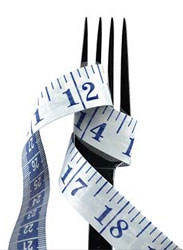 Water in your glass is good, but water in your food can have serious slimming power. In a new American Journal of Clinical Nutrition study, obese women ages 20 to 60 were told to either reduce their fat intake or increase their intake of water-rich foods, such as fruits and veggies. Although they ate more, women in the water-rich group chose foods that were more filling-yet had fewer calories-so they still lost 33 percent more weight in the first 6 months than the women in the reduced-fat group.
Water in your glass is good, but water in your food can have serious slimming power. In a new American Journal of Clinical Nutrition study, obese women ages 20 to 60 were told to either reduce their fat intake or increase their intake of water-rich foods, such as fruits and veggies. Although they ate more, women in the water-rich group chose foods that were more filling-yet had fewer calories-so they still lost 33 percent more weight in the first 6 months than the women in the reduced-fat group.
Detour: Fill up on food that’s high in H2O. Some good choices in addition to fruits and veggies: broth-based, low-sodium soups; oatmeal and other whole grains; and beans.
Roadblock #9: You Give Up Junk Food Today But Put Off Joining A Gym
Tackling one goal at a time is supposed to help you succeed. But new research published in the Archives of Internal Medicine bucks that conventional wisdom. In a study of more than 200 people who smoked, had high blood pressure, and weren’t extremely active, one group was asked to quit the butts, cut back on dietary sodium, and increase physical activity all at once. Another group addressed one bad habit at a time. The group that tackled all their problems simultaneously had the higher success rate after 18 months.
Detour: Combining your goals may work for the same reason job negotiations do: When you ask for everything, you’re more likely to get something. Put this thinking to the test by creating a healthy eating and exercise plan and throwing all your energy into following both.
Roadblock #10: You Never Think About Potassium
A recent Canadian study concluded that getting more potassium might help lower your weight and blood pressure. Levels measured in study participants were proportional to their diet and weight. The richest sources of potassium are beans, vegetables, and fruit, so the person with high potassium levels is consuming a lot of these foods, which are low in calories and are the most filling.
Detour: You should aim for 4,700 milligrams of potassium each day. Supplements may help you hit that target, but doctors don’t recommend them for everyone. Try filling up on white beans (1 cup: 1,000 mg. potassium), winter squash (1 cup: 494 mg.), spinach (1 cup: 840 mg.), baked potato with skin (926 mg.), yogurt (1 cup: 600 mg.), halibut (4 ounces: 566 mg.), and orange juice (1 cup: 473 mg.).
Sometimes when people diet they do not take into account the actual way to lose weight, some people believe if they eat less they will lose weight, which is not necessarily true, if you do not eat enough or worse nothing then your body is basically saying to itself “I’m not getting any food” so what your body does is store any fluid and food in your body as fat, and this can cause you to become heavier, so make sure your not starving yourself and eat plenty of nutritious food.
Why Diet & Exercise Alone Don’t Work
That’s right, diets alone don’t work. I’m sure you’ve heard that to lose weight, all you need to do is “eat less and exercise more. This simplistic approach is a set up for frustration and failure. It ignores the psychological forces necessary to lose and keep the weight off (such as motivation, focus, and commitment).
Examples include food serving as relaxation when stressed, a relationship substitute when lonely, or as stimulation when bored. Have you ever caught yourself using food for any of these reasons? The more powerful the secondary reasons to keep eating poorly, the more the poor eating will continue. Ignoring your mind’s role in weight loss makes the entire process so much more difficult.
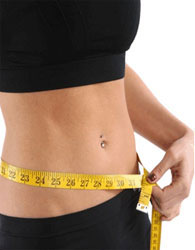 Most formal “fad” diets don’t work either. Besides ignoring these same psychological factors, these diets usually promote such a different way of eating that it can be nearly impossible to maintain them. Also problematic are diet pills, powders, and other supplements that attempt to artificially suppress the appetite. The high, endless costs of buying these special products or foods and your old ways of eating will return as soon as you stop buying the products. Are you really supposed to buy these supplements for the rest of your life? As soon as you stop buying them, your appetite will come back, your old ways of eating come back, and so will the weight.
Most formal “fad” diets don’t work either. Besides ignoring these same psychological factors, these diets usually promote such a different way of eating that it can be nearly impossible to maintain them. Also problematic are diet pills, powders, and other supplements that attempt to artificially suppress the appetite. The high, endless costs of buying these special products or foods and your old ways of eating will return as soon as you stop buying the products. Are you really supposed to buy these supplements for the rest of your life? As soon as you stop buying them, your appetite will come back, your old ways of eating come back, and so will the weight.
The “weight loss mindset” you’ll need to lose and keep the weight off includes focus, desire, common sense, self-discipline, commitment, and positive motivation. Of course, getting into this way of thinking is easier said than done. This is where the Dichotics come in. “Clinical hypnosis” (or “hypnotherapy”) is a psychotherapy technique where a subject incorporates powerful non-conscious tools for change to improve through the power of reinforced suggestion.
A combination dichotics/behavior change program is by far the best and most effective weight loss approach. This, of course, is the format of The Dichotics Weight Loss Mindset. Our mindset and beliefs about weight loss is what either allows us to quickly shed pounds or barely make any progress at all? You may have met people who hold the belief that weight loss is very easy. They have an optimistic outlook on losing weight and the activities required to succeed.
Tell me, do these people usually get results or not. I have noticed that they do. Now look at a person who is resentful about having to lose weight and one who takes a negative attitude toward dieting and exercise. They look at it like it’s a burden that they should not have to carry. What kind of results do these people usually get? I have noticed that they are able to go for years without making any serious ground.
Our thoughts and feelings prompt us to take certain actions. If your thoughts are positive they will tell you that dieting is easy and exercise is fun. If they are negative they will resent having to lose weight and will make everything seem overwhelming and difficult. These different thinking patterns will certainly yield different actions and different results. Don’t you think?
The trick is to notice any negative thought that arises and see what it is doing to you. Does it make you want to eat fattening food? Does it tell you to skip your workout routine? Now ask yourself, does this thought have my best interest at heart? The answer will almost always be a resounding no. By asking yourself this question the thought will lose its power to control your actions. You will be free to make your own choices and do as you see fit. This is the beginning of rapid weight loss that feels effortless.
As often as you can, try to notice the thoughts arising in your mind that feel even the slightest bit negative. Look deeply to see what they really bring into your life. This will reveal the truth and make weight loss easy. Start now and results are not far away.
-
Cherokee Billie’s Proven Weight Loss Program
It’s the beginning of the New Year and most people make a res
-
These Tips And Ideas Can Help You Lose Weight
There’s a bit of math behind weight loss. Burning greater
-
Tips To Lose Weight For Health
Excessive weight can cause health problems, indeed such as choles
-
Achieve Weight Loss, Health And Vitality
When you think about all the toxins in our current environment it jus
-
Tips to Lose Weight at Home
People are constantly making their effor
-
Causes of Obesity
You know you are obese and not just overweight when your bodyweight
- DON'T MISS
- Natural Solutions To A Hemorrhoid Flare Up
- Skyrocket Any Weight Loss Results Utilizing Hypnosis
- Anthony Bourdain.....What?!
- Tom Venuto shows the way to Burn the Fat Feed the Muscle
- Weight Loss Doesnt Have To Be Hard
- Easy Weight Loss - Diets That Work For Him
- Obesity In Dogs
- What You Need To Know About Acupuncture Weight Loss Treatments
- Detox Fitness Boot Camp In Southern Indiana
- Handling an Unsupportive Spouse


